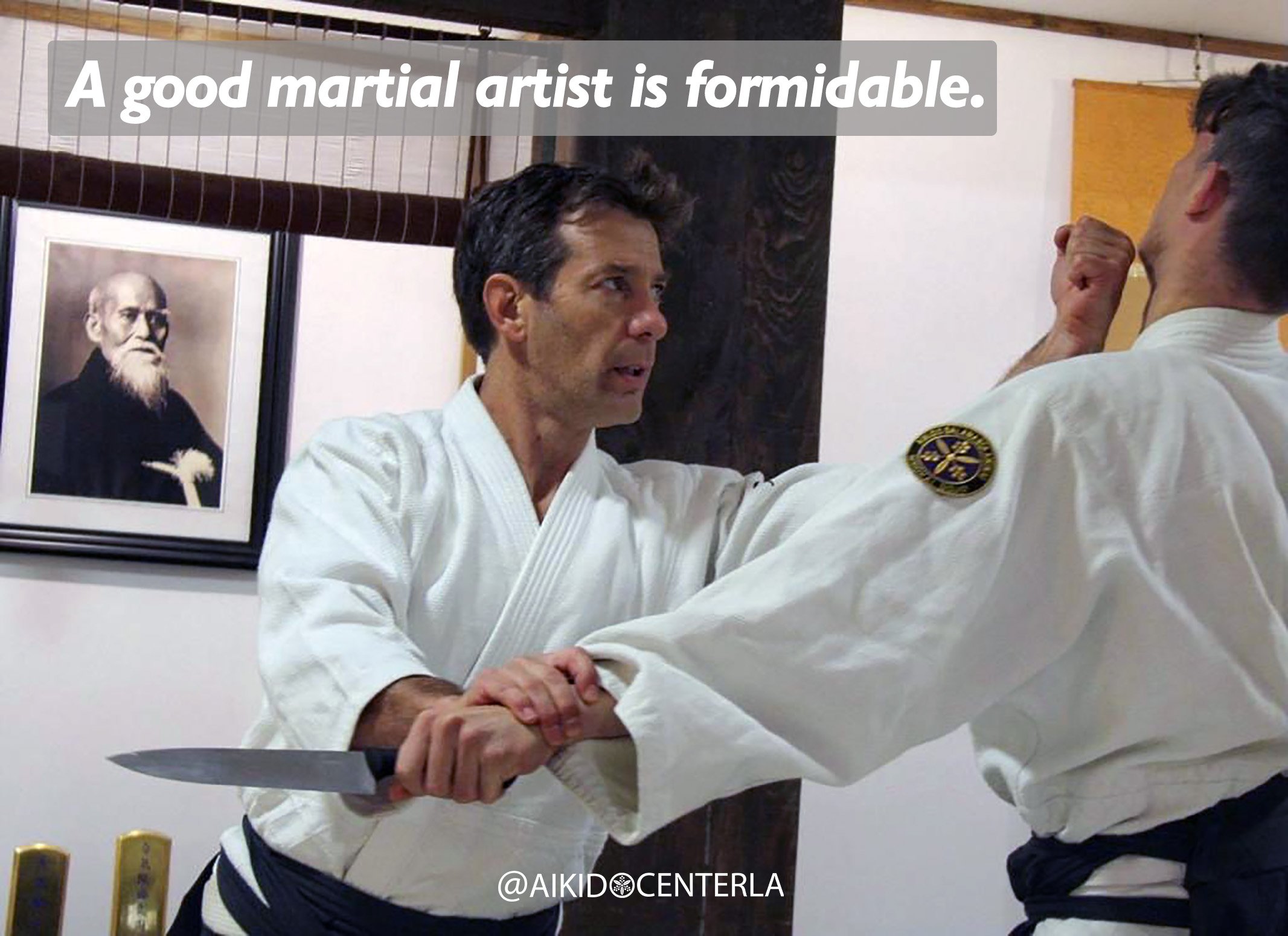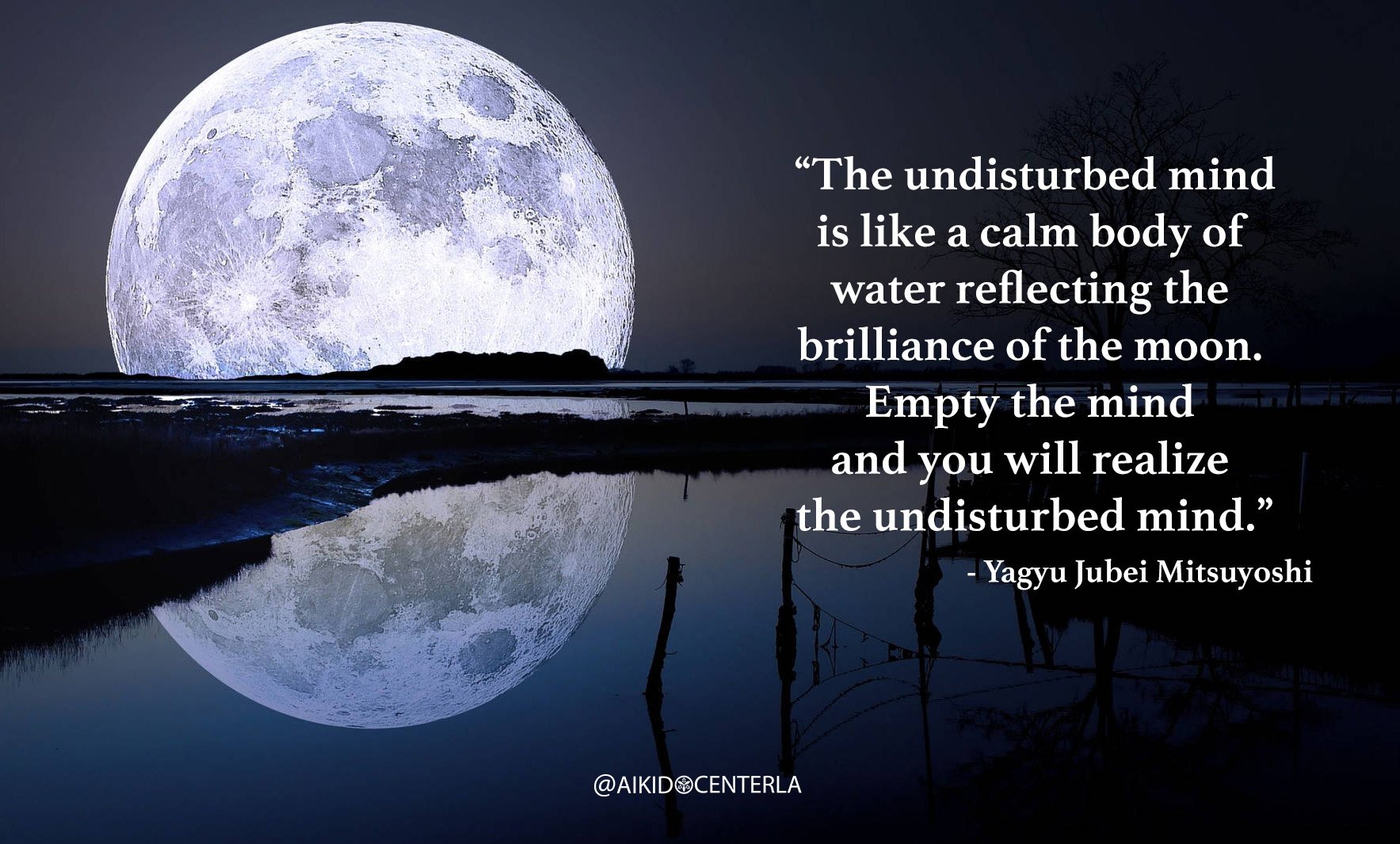Editor's note: Ito Sensei's article originally appeared in the March edition of El Budoka magazine in honor of his passing 16 years ago.
Reverend Kensho Furuya: Modern Samurai
Many of us like to think that we are living the Way of the samurai, but how many of us really are? Reverend Kensho Furuya was a swordsman, Aikidoist and teacher who lived the Way.
The best way to describe Rev. Kensho Furuya was that he was an old-world samurai who was born too late. Furuya Sensei’s old samurai sentiment was, at times, too impractical and unrealistic for this modern day and age. He believed that a samurai life should be one of loyalty, duty, filial piety, economy and hard work, while living a simple and stoic lifestyle.
Rev. Kensho Furuya was born Daniel Masami Furuya on April 25, 1948, in Pasadena, California in the United States. Furuya Sensei was a Sansei or third generation Japanese-American whose grandparents immigrated to the United States in 1919. Furuya Sensei’s father was a member of E Company of the famous 442nd Regimental Combat team in WWII.
Furuya Sensei comes from a long line of samurai. His maternal family lineage were retainers and served as samurai under the daimyo, Takeda Shingen in the 16th century. Takeda Shingen assigned Furuya Sensei’s ancestors to establish a branch of Asama Jinja Shrine in the Yamanashi prefecture and they have been the hereditary custodians for over 450 years.
During the Sengoku period, Furuya Sensei’s paternal family ancestors were high ranking samurai of the Ikoma Clan in the Bitchu Province occupying the Takamatsu Castle which is in present-day Okayama Prefecture. Takamatsu Castle was originally built in the 16th century by the Daimyo, Ikoma Chikamasa who was a retainer of Oda Nobunaga and then Toyotomi Hideyoshi.
Furuya Sensei’s grandfather was proud of his samurai lineage and tradition and he tried to teach the ways of the samurai warrior to him when he was a child. Furuya Sensei said that he always felt a sense of responsibility to maintain his family’s samurai ancestry as the only grandchild in their immediate family.
At the age of eight, Furuya Sensei began his martial arts training and received his shodan or first degree black belt in Kendo at the age of ten. By the age of 14, Furuya Sensei earned his second rank of shodan in Aikido as well.
Furuya Sensei studied Kendo and Iaido under many great teachers when he was a teenager. He used to vividly recall how masterfully the famous Kendoist Torao “Tiger” Mori moved and that he once saw Tiger Mori attack with tsuki so hard that his opponent was lifted up horizontally. Furuya Sensei also studied swordsmanship, Kendo and Iaido under Takiguchi Yoshinobu Sensei who was a well-known Kendo teacher and an expert in Itto Ryu swordsmanship and Iaido. Furuya Sensei’s most notable Iaido teacher was Takeshi Mitsuzuka Sensei who was a student of the founder of Iaido, Nakayama Hakudo.
Furuya Sensei’s first Aikido teachers comprise a virtual who’s who in early years of Aikido in the United States. In the 1960s, most Aikido teachers were only first or second degree black belt and most only taught part-time. Furuya Sensei was too young to open a dojo himself, but was qualified enough to be voted in as a member of the technical committee for the Southern California Aikido Federation. In his early years, Furuya Sensei studied with Tadaharu Wakabayashi and Isao Takahashi, but he felt that his first real teacher was Mitsunari Kanai Sensei. During Furuya Sensei’s studies at Harvard University in 1968, he studied under Kanai Sensei at New England Aikikai. In the early 1980s, Furuya Sensei also spent time assisting some of the deshi’s that were dispatched by Hombu Dojo to teach Aikido in the United States. From a distance, Furuya Sensei worked with Yamada Sensei by editing and publishing the United States Aikido Federation’s newsletter and by acting as Chiba Sensei’s assistant in 1981.
In 1969, Furuya Sensei received permission to become an uchi-deshi or “live in student” at the Aikido World Headquarters in Japan and arrived after O’Sensei had passed away. Furuya Sensei would go on to deshi under Nidai Doshu, Kisshomaru Ueshiba. While at Hombu Dojo, Furuya Sensei was a deshi alongside future notable teachers such as Ichihashi Sensei, Fujita Sensei, Suganuma Sensei, Sasaki Sensei, and Saotome Sensei. In addition to studying with Nidai Doshu, Furuya Sensei had the opportunity to study with Osawa Sensei, Arikawa Sensei, Yamaguchi Sensei, and Saito Sensei. Furuya Sensei credits Nidai Doshu as his Aikido teacher and Kisaburo Osawa Sensei as the reason he became a priest.
In 1974, hoping to train more regularly, Furuya Sensei decided to open his first dojo in Hollywood, California called Aikido Renbukai of Hollywood. Later, Furuya Sensei establishing the Aikido Center of Los Angeles in Downtown Los Angeles, Little Tokyo in 1984.
In 1989, Furuya Sensei was ordained as a Zen priest under Bishop Kenko Yamashita and received the name of Kensho (賢正). In 1991, along with Bishop Yamashita, Rev. Kensho Furuya spoke before the United Nations on the subject of world peace.
Furuya Sensei wrote numerous magazine articles and he frequently appeared on television programs speaking on the subjects of swords, Aikido, martial arts, Asian studies, and Eastern philosophy. In 1994, Furuya Sensei authored the acclaimed nine-volume video series, Aikido Shoshinshu: The Art of Aikido. In 1996, Furuya Sensei wrote Kodo: Ancient Ways.
Furuya Sensei had been teaching for almost 50 years and often referred to himself as a “stepping stone” for his students down their paths of Aikido and Iaido. Furuya Sensei achieved the rank of sixth-degree black belt in Aikido and sixth-degree black belt in Muso Shinden Ryu Iaido with the teaching rank of Kiyoshi.
Furuya Sensei passed away on March 6, 2007, while teaching class at the Aikido Center of Los Angeles.
We can see from this brief essay that Furuya Sensei lived this incredible life where he embodied the samurai’s ethos of hard work, duty, honor and stoicism. Furuya Sensei really was someone from a bygone era. Furuya Sensei was this person who dedicated his life to living the samurai ideals despite living in this modern world full of temptation and distraction. Furuya Sensei would often say to his students “The Way is hard.” This statement reminds us that a true samurai is not just a samurai because they swing a sword, but because they are people who strive to be loyal, humble, hardworking and steadfast no matter what.
In order to live the Way of the samurai, we need a strong sense of commitment, loyalty, patience, duty, honor, respect and the willingness to go through anything for our training. According to the samurai way, there is no reward or incentive in what we do. Everything we do must be on our own power and will. A samurai must be totally independent but as a strong individual who works well with others. The samurai spirit dictates that we must maintain a strong sense of honor and self so that we will do no wrong despite the temptation. A warrior never makes excuses for anything, their honor comes before personal profit and wealth and comfort. A samurai lives a life of poverty without any recognition. This is what makes a warrior so special and wonderful. Rev. Kensho Furuya lived the life of the modern samurai.
Read Furuya Sensei’s full bio at www.kenshofuruya.com
Read the El Budoka article





















